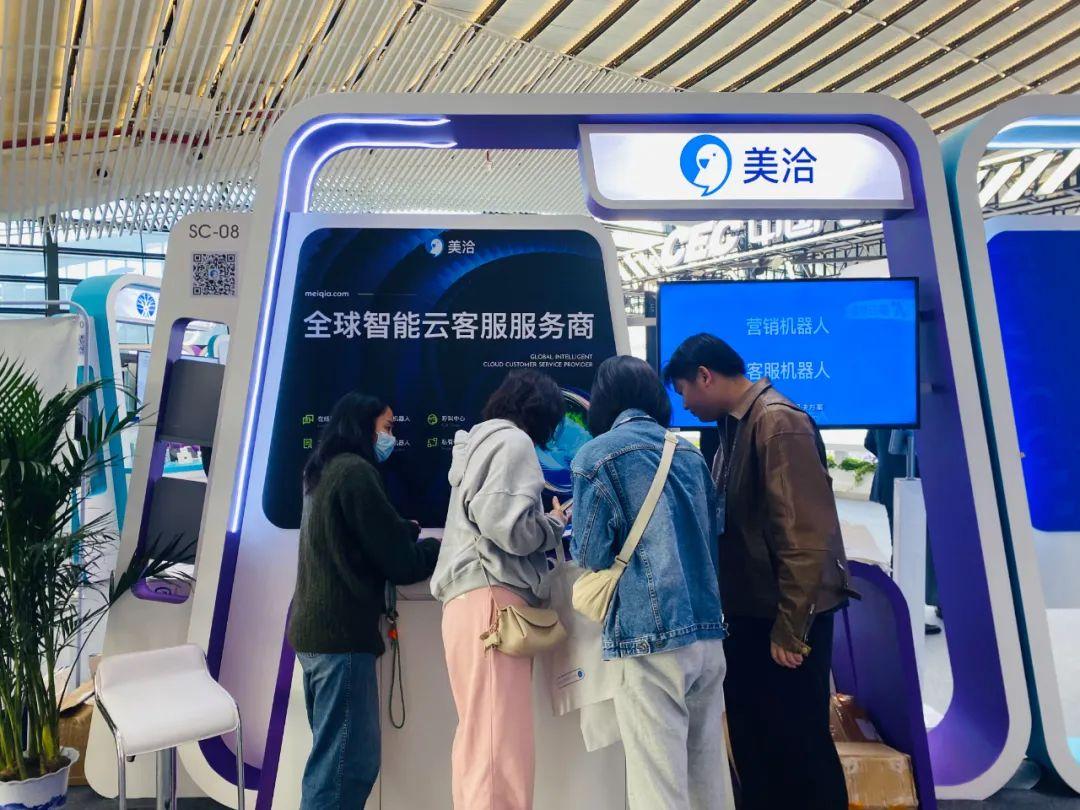
网站公告
more- Look To Secu... 25-04-16 19:58
- Online Busin... 25-04-16 19:56
- Learn How To... 25-04-16 19:54
- Finding Loca... 25-04-16 19:54
The Revolution Of End-User Service In The Technological Age
ZJOKlara5385853042200 2025.04.13 09:44 查看 : 2
The methods businesses communicate with their patrons has suffered notable transformations over the years, particularly with the emergence of digital innovation. Today, clients expect smooth interaction instantaneous feedback, and tailored experiences across multiple channels, including online media, 美洽 messaging apps, and websites assets. This change has launched to a quickly evolving landscape for end-user service, and it is essential for companies to adjust and prepare for the mutating expectations of their clients.
One of the most noteworthy patterns in customer support is the growing dependence on machine learning. Chatbots are becoming more sophisticated, and widespread adopted, enabling organizations to provide around the clock assistance promptly provide common requests and transfer complex issues to human agents. These technologies can help reduce response times enhance first-call outcome percentages and improve overall end-user satisfaction.
Another essential area of focus is multichannel support, which offers a unified outcomes across multiple touchpoints, including social platforms, messaging apps, email and phone. Clients can now initiate support requests through their preferred medium and expect a reaction in real-time. By adopting multichannel strategies, companies can guarantee that patrons receive uniform and tailored support, irrespective of how they choose to interact with the brand.
Customization is also a essential aspect of customer service in the digital era. With the vast amounts of data collected from interchanges, organizations can create rich end-user profiles, comprehend their allies, and adapts their support to unique needs. Additionally, AI-powered mappings can determine trends and sequences, enabling brands to make data-driven decisions to enhance the customer outcomes.
The digital era has also brought about a significant shift toward remote work, and end-user support is no exception. Companies are adopting remote work models to leverage the flexibility and cost savings related with it. Moreover, digital platforms and resources are enabling seamless collaboration and communication among customer service teams, allowing them to work more efficiently and efficaciously.
However, there are also concerns around the social aspect of end-user service, particularly regarding empathy and feeling perception. As automation becomes more prevailing, organizations must find a balance between utilizing technology and maintaining the human feel. This requires staff to be adjustable empathetic and proficient in managing complex conversations.
To stay ahead of the curve, organizations should invest in ongoing education and training for their end-user service teams, emphasizing the importance of compassionate communication and human interaction. Moreover, recognizing the growing demand for environmental responsibility, organizations should strive to minimize their environmental footprint and integrate eco-friendly practices into their end-user support operations.
As the end-user service terrain continues to change, companies must prioritize flexibility, technology, and people-centric approaches to fulfill the changing requirements of their clients. This requires continuous innovation, adjustability, and a willingness to experiment with new approaches to deliver exceptional experiences that resonate with clients and establish organizations apart from their competitors.
One of the most noteworthy patterns in customer support is the growing dependence on machine learning. Chatbots are becoming more sophisticated, and widespread adopted, enabling organizations to provide around the clock assistance promptly provide common requests and transfer complex issues to human agents. These technologies can help reduce response times enhance first-call outcome percentages and improve overall end-user satisfaction.
Another essential area of focus is multichannel support, which offers a unified outcomes across multiple touchpoints, including social platforms, messaging apps, email and phone. Clients can now initiate support requests through their preferred medium and expect a reaction in real-time. By adopting multichannel strategies, companies can guarantee that patrons receive uniform and tailored support, irrespective of how they choose to interact with the brand.
Customization is also a essential aspect of customer service in the digital era. With the vast amounts of data collected from interchanges, organizations can create rich end-user profiles, comprehend their allies, and adapts their support to unique needs. Additionally, AI-powered mappings can determine trends and sequences, enabling brands to make data-driven decisions to enhance the customer outcomes.
The digital era has also brought about a significant shift toward remote work, and end-user support is no exception. Companies are adopting remote work models to leverage the flexibility and cost savings related with it. Moreover, digital platforms and resources are enabling seamless collaboration and communication among customer service teams, allowing them to work more efficiently and efficaciously.
However, there are also concerns around the social aspect of end-user service, particularly regarding empathy and feeling perception. As automation becomes more prevailing, organizations must find a balance between utilizing technology and maintaining the human feel. This requires staff to be adjustable empathetic and proficient in managing complex conversations.
To stay ahead of the curve, organizations should invest in ongoing education and training for their end-user service teams, emphasizing the importance of compassionate communication and human interaction. Moreover, recognizing the growing demand for environmental responsibility, organizations should strive to minimize their environmental footprint and integrate eco-friendly practices into their end-user support operations.
As the end-user service terrain continues to change, companies must prioritize flexibility, technology, and people-centric approaches to fulfill the changing requirements of their clients. This requires continuous innovation, adjustability, and a willingness to experiment with new approaches to deliver exceptional experiences that resonate with clients and establish organizations apart from their competitors.

?? 0
Copyright © youlimart.com All Rights Reserved.鲁ICP备18045292号-2 鲁公网安备 37021402000770号

